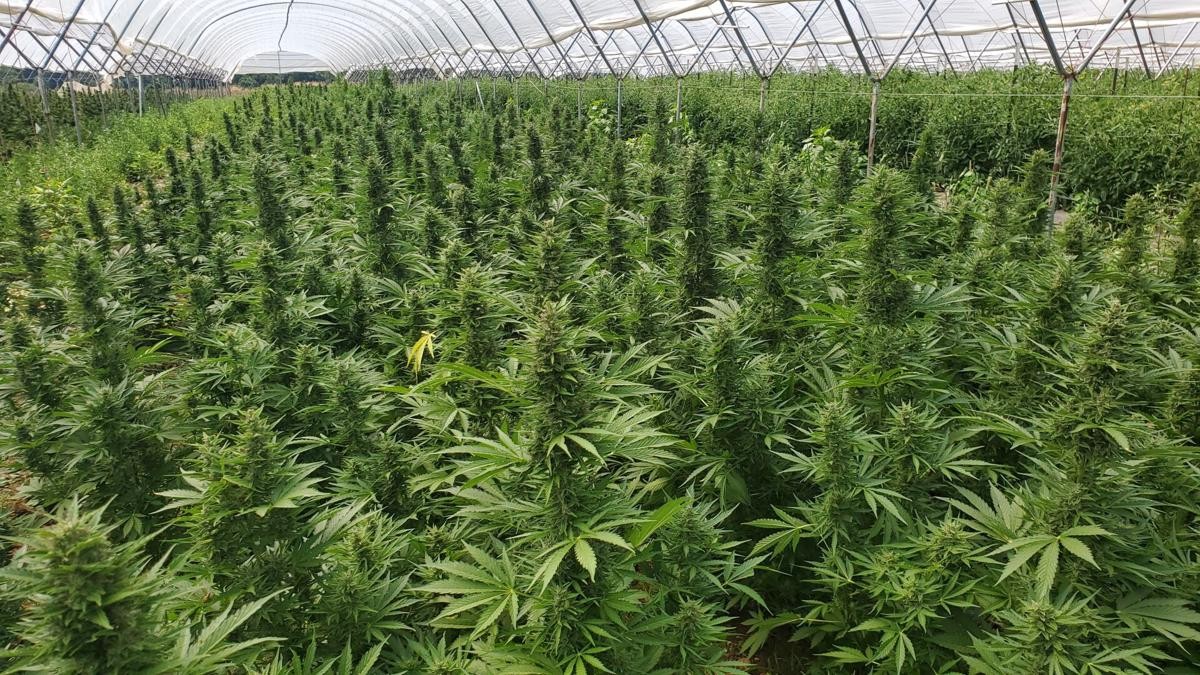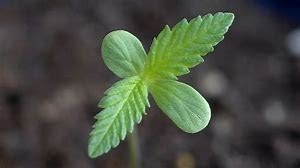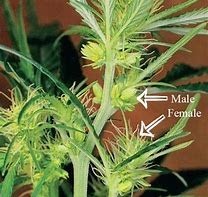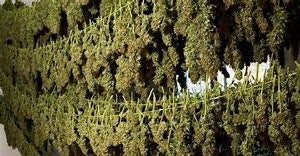Growing Hemp for Fiber, Seed, and CBD for First Time Farmers
Hemp has grown alongside humans for thousands of years. Before the cannabis prohibition began in the 1930s, the United States was one of the biggest producers of hemp fiber. Hemp was completely outlawed in 1970 under the Controlled Substance Act, due to misinformation about the differences between hemp and it's psychoactive cousin, marijuana. Thanks to growing research and advocacy those differences are now understood and reflected in the 2018 Farm Bill, which legalized the cultivation and distribution of hemp and hemp products once again.
Hemp was historically grown for fiber, but now farmers are also growing it for seeds or CBD. This makes hemp a new, uncharted industry, despite its history. The best practices and techniques have not been refined as there are many differentiating factors to consider like climate, soil, and genetics. But as the industry grows, so does the research and resources for pioneering hemp farmers.
Regardless of which type of hemp product you're growing for, the very first thing you'll need to do is register with your state department of agriculture and make sure you have all the right permits in place. For details about Alaskan hemp guidelines, visit our YouTube channel Hemp for Healthcare in Alaska.
You'll also want to establish these other three important factors before planting:
- Identify the source, quality, availability, and logistics of your seeds. Not all hemp strains are the same, and it's very important your seeds have strong genes for pest resistance and low THC content. The legal limit nationwide is 0.3% THC or less on a dry net weight basis.
- Secure your hemp processor and agreed payment amounts.
- Have the right equipment in place. Here is an article that shows different techniques used by American and Canadian farmers.
About the Hemp Plant
Hemp is part of the cannabis family and the genetic cousin of marijuana. The difference between the two is the cannabinoid content. Hemp is high in CBD and low in THC, while marijuana is the opposite.
What makes hemp so attractive is that it can thrive in almost any environment except for extreme desert or high mountain conditions. Since hemp originates from Central Asia, it likes hot, sunny weather the best and dislikes excessively rainy climates.
Hemp is drought tolerant and requires less water than other crops. When planted close together the leaves create a canopy at the top that blocks sunlight from reaching the ground. This discourages weeds from growing. Hemp is also more pest and disease resistant than other crops due to its potent terpenes. A terpene is what gives plants their distinctive smells and are used to deter pests, boost the plants immunity, or attract pollinators.
Hemp does not need supplementary nutrition after it's been planted, making it an excellent organic crop. It renews its own soil through a natural composting action by dropping leaves and seed shells as it matures.
Hemp can also be used for cleaning and purifying soil through a process called bioremediation. This process is so powerful it was used to clean up radioactivity in the soil around Chernobyl. However, before planting you'll want to make sure your soil is clean. The elements in the ground are absorbed into the plant and will show up in the final product. This is not good, especially if you're growing for CBD.
Sowing the Seeds
Whether you're growing hemp for fiber, seed, or CBD, the process begins the same – with the soil. Soil is the most important part of any growing process. You'll want to test your ground for heavy metals, including elemental sulfur, potassium sulfate, and rock phosphate.
Hemp prefers Ph neutral soil that drains well. Loam is ideal since it has great drainage and retains moisture. Glacial silk, like the soil found in the Alaskan Matanuska Valley, is also good for hemp since it is nutrient dense, drains well, and holds water. To learn more about soil types, to check what kind of soil you have, and how to improve drainage, click here.
Hemp likes nitrogen fertilizer the best – about a hundred pounds per acre. Phosphorus is also important, especially when growing for CBD, as the plant uses it to flower. Here is a checklist of hemp fertilizers to ensure a healthy crop.
Plant hemp in the spring after the last frost when the ground reaches 50 degrees Fahrenheit. Plant the seeds in a shallow, firm bed, like how you would for clover or alfalfa so they'll germinate quickly. For crop rotation, alfalfa or buckwheat are best, since alfalfa holds and returns nitrogen to the soil while buckwheat does the same for phosphorus.
Growing for Fiber
Growing hemp for fiber is the easiest type of hemp to grow. The fibers will be used to make textiles, building materials, and even plastics.
Harvest your hemp after it's finished pollinating and the first seeds begin to develop, since male start dying soon after pollination. You can use a sickle bar or hay swather to cut the stalks, and then leave them in the field to let them rot slightly. This will make it easier to separate the fibers from the stalks in a process called retting. After retting, a baler can be used to bale the stalks for storage and drying.
Growing for Seeds
Hemp seeds are high in proteins, fatty acids, and fiber. As with any grain crop, make sure you have a proper harvesting technique, processing, packaging, transportation, and storage. Most hemp farmers have found a standard combine can be used for harvesting, though you can also use shears, snips, or scythes to cut below the lowest seed pod.
The tricky part about harvesting hemp for seeds is that seeds mature at different rates. The seeds near the bottom of the stalk mature first, and once they do, the shell splits and drops the seeds. To minimize the number of lost seeds, proper harvesting time is left to your best judgment.
Growing for CBD
CBD is the toughest, most labor intensive, and lucrative hemp crop to farm. You'll need to understand plant stressors, as a stressed hemp plant can lead to a spike in THC. Stressors include moisture content, how hot or cold the plant is, getting too many nutrients or not enough, and soil makeup. Make sure to avoid herbicides, insecticides, and fungicides when growing hemp for CBD. Residues remain present through the extraction process and will lower the quality and safety of the final product.
Since you're growing for the flowers, you'll only want the female plants. Males will pollinate an entire crop and trigger seed production in the females. This will cause a decrease in cannabinoid concentration as their energy will go towards making seeds instead of flowers. Once the plants reach their sexual maturity, you'll need to scan the crop for pollen sacks on males and immediately uproot them.
As your hemp matures and flowers it will form trichomes. Trichomes are resin glands that produce the cannabinoids and look like tiny, bubbly crystals. When the trichomes turn from white to milky white, the hemp is ready for harvest. Another way to check is to conduct consistent cannabinoid testing. This will ensure your crop doesn't become 'hot' (the term used for THC content over the legal limit), while measuring the CBD content. As little as a one percent change on one acre can equate to a $20,000 difference in value..
After your hemp is harvested, it will need to be cured. This is done by hanging the plants upside down on a wire inside a facility out of direct sunlight and with proper fanning and ventilation. A slow dry with temperatures between 60 and 70 degrees Fahrenheit and 60% humidity will cure it best. Make sure you don't hang the plants upside down whole, as that could lead to mold forming in the middle branches. Instead, cut off individual branches to hang.
Subscribe to our YouTube channel to keep up to date with Alaskan hemp regulations and licensing and for more information on how and when to grow. As spring approaches, Hemp for Healthcare in Alaska can help you get ready with our high-quality seeds and clones from East Coast Hemp Company.
What kind of hemp will you grow?
When you subscribe to the blog, we will send you an e-mail when there are new updates on the site so you wouldn't miss them.
| FDA Disclaimer |
| Important Disclaimer: The information contained on this site is intended for informational and educational purposes only. Any statements made on this website have not been evaluated by the FDA and any information or products discussed are not intended to diagnose, cure, treat or prevent any disease or illness. Please consult a healthcare practitioner before making changes to your diet or taking supplements that may interfere with medications. Any medical information published on this website is not intended as a substitute for informed medical advice and you should not take any action before consulting with an informed healthcare professional. |







Comments